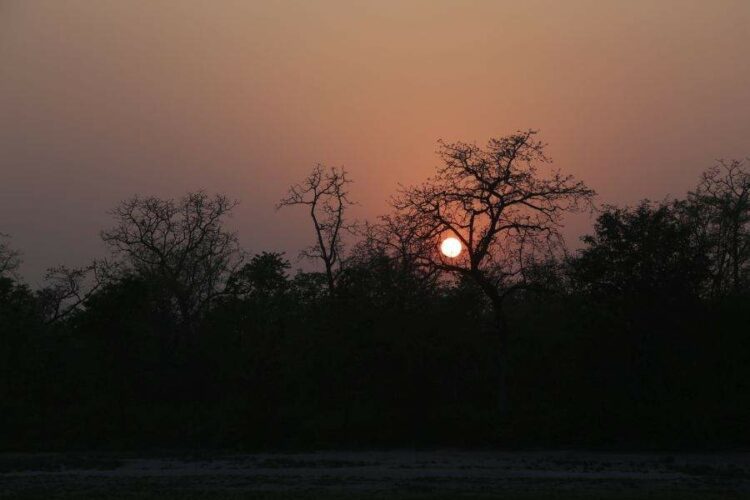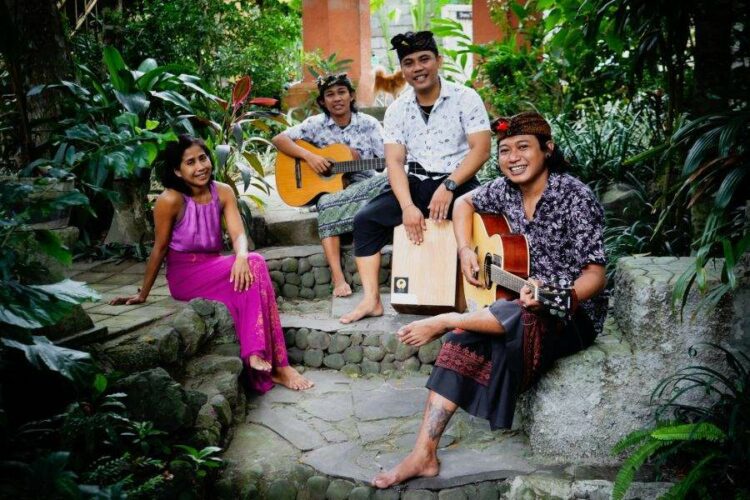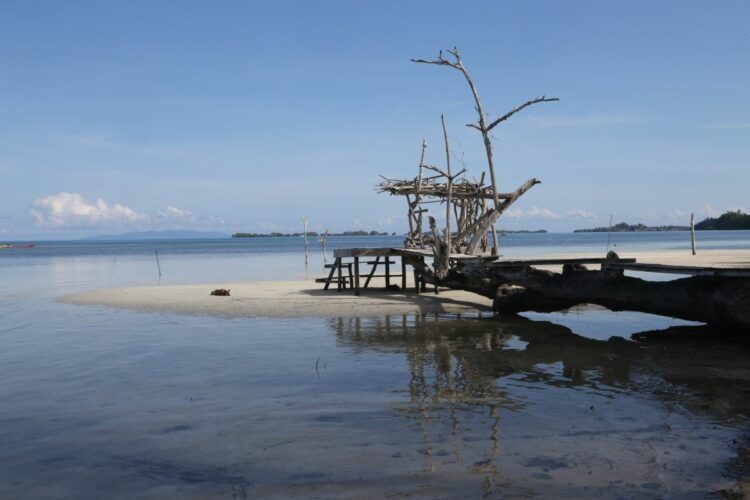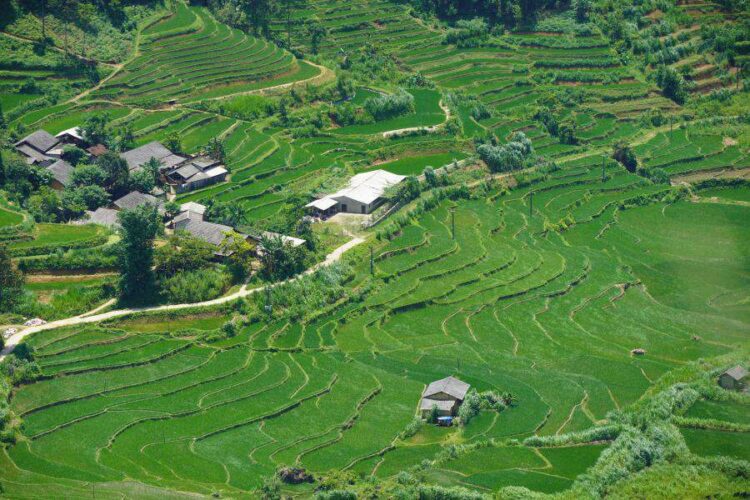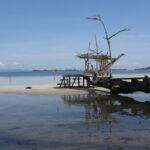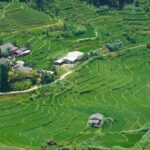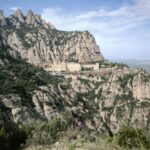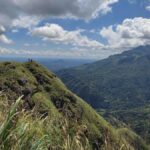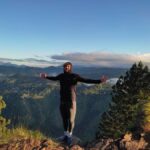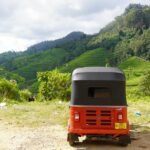Safari in Bardia National Park
After we were totally thrilled by our safari in Chitwan National Park, it was a no-brainer for us to visit the much more pristine Bardia National Park in southwestern Nepal. You can clearly feel the remoteness of the park when you arrive in the small village. Everything seems very pristine. Compared to Chitwan, we hardly met any tourists here, only those who are really interested in wildlife, like us. Here we were also supposed to go on safari on foot, but the difference is that the largest population of wild tigers is said to live here, so the thrill is even greater.
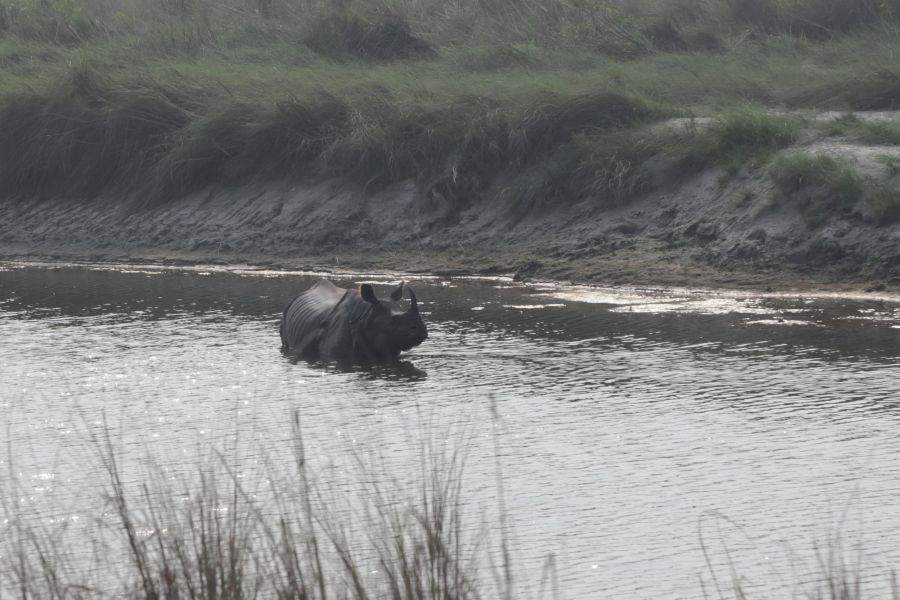

General information about Bardia National Park
Bardia National Park is located in the southwest of Nepal. Due to its location, the national park is not on Nepal’s classic tourist route that stretches between the Everest region, Kathmandu and Pokhara. The national park is located in the flat Terai, the fertile lowland plain that stretches south of the Himalayas in India, Nepal and Bhutan from the Yamuna in the west to the Brahmaputra in the east. The park landscape is very diverse: sal forests, riparian forests, hardwood forests, mixed forests of Indian Rosewood and Khair communities, forest savannahs, phantas and tall grasslands.
Tharu people
The Tharu largely inhabit the Terai of Nepal and the north of India. They describe themselves as people of the forest and are usually very familiar with it. Some of them therefore work as guides for walking safaris. They live in very original settlements, mostly in mud huts with a thatched roof, and maintain their old traditions. Many are also involved in handicrafts such as making furniture from rattan and pottery. The majority, however, live from agriculture and livestock farming.
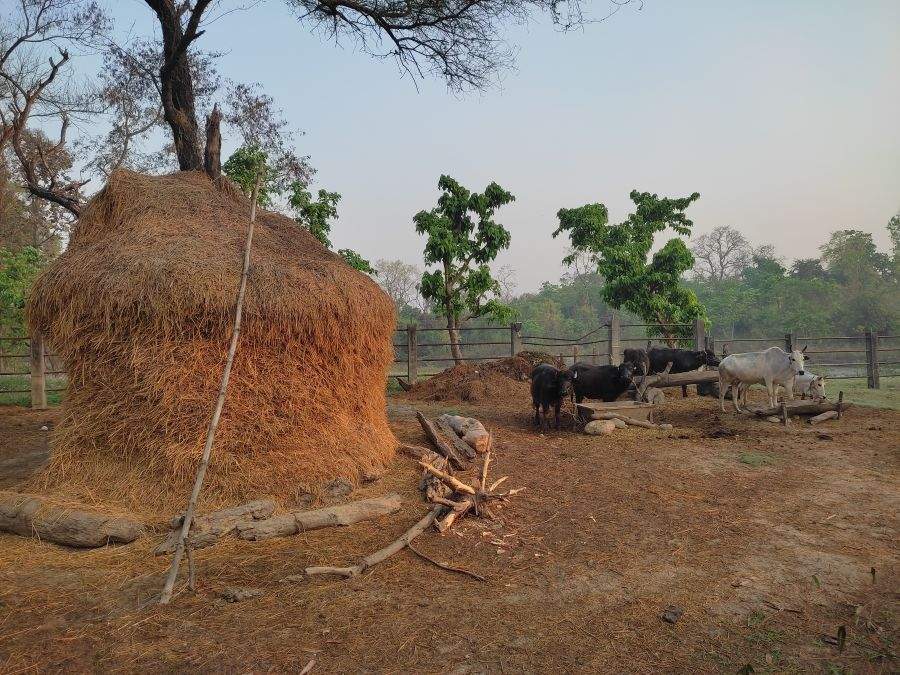

What animals live in Bardia National Park?
The “stars” of the national park are the large population of Bengal tigers. Spoiler alert: Here, too, we saw all the tiger’s tracks, only it did not show itself to us. In addition, there are chances to see armoured rhinos, wild elephants, bison, swamp crocodiles, monitor lizards, Gangetic gavials, Gangetic dolphins, peacocks, eagles, pronghorn deer, deer goat antelopes, monkeys, deer and many other mammals, reptiles, birds and amphibians.
What safari offers are there?
The bottom line is that there are 3 possible safaris that you can book. However, we strongly advise against the safari on an elephant, as they are kept in very poor conditions.
Option 1: Walking Safari (Our tip)
Doesn’t that sound like pure adventure? You walk through the park with 2 guides and try to spot animals. The guides are heavily armed in case of emergency – with a stick! Equipped with binoculars and enough provisions, the safari lasts a whole day, from 7:00 in the morning until late afternoon. The atmosphere is indescribable, no motors, no chatter of people, just the sound of nature. The guides are experienced trackers and can provide you with exciting information about the animals. Unfortunately, we couldn’t see a tiger, although we saw the remains of its prey, its poop, scratch marks on the tree and tracks!
Our highlight: Bathing rhinos, 2 we saw from a distance and 1 from a relatively short distance.
Option 2: Jeep Safari
The classic variant is the jeep safari, which looked less attractive to us in Nepal. There were many local tourists for whom the jeep ride was more like a visit to an amusement park. However, these are just our observations, but locals confirmed similar things to us on site.
Option 3 : Elephant safari
We strongly advise against this option after seeing how the elephants were treated. Besides the elephants for “tourism purposes”, there are also the government elephants, which in turn are used as farm animals and are well cared for. These are often used for patrolling the jungle or for salvage.


Procedure of a Walking Safari in Chitwan National Park
First you meet your guides at the agreed meeting point at 7:00 in the morning. Together with the guides you walk to the park entrance, which was relatively far for us. Before the actual safari started, there was a short briefing by the guides on how to behave towards the large animals in an emergency in order to minimise the danger. After the safari, there is a tuk tuk for the way back to the accommodation.
Wild elephant:
Here you should somehow try to put about 150 m between you and the elephant, as from this distance it no longer sees you as a serious threat and you have a good chance of being left alone.
Rhino:
As rhinos can smell very well but see very poorly, it is best to get behind a tree or climb up on it when running away. While running away, you should throw pieces of yourself, as the smell irritates the animals and they may stop for a moment, thus buying you some time.
Tiger:
With the tiger, it only helps to pray, as it is superior to us in all respects. You can only hope that the tiger is not interested in you, as tigers are usually rather shy animals.
Afterwards, several different places in the national park are visited on foot. We walk through grasslands, thickets, jungles, along the riverbanks to various spots where we wait in the hope that the animals will show themselves. Often these spots are located on easily visible parts of the riverbank. Even if you cover a few kilometres, the safari is quite manageable for people of normal physical fitness, as there are plenty of breaks. Around 12:00 noon there is a lunch break.
How much does a safari in Bardia National Park cost?
Unfortunately, I cannot give exact prices for the jeep or elephant safari. A safari on foot costs around 5,500 (NPR) per person. It is certainly possible to negotiate here, but we decided against it because we were among the first guests since the pandemic and felt very comfortable in our accommodation. The price includes both breakfast and lunch in the jungle. Of the 5,500 NPR, 2,000 NPR are for the entrance fee to the national park. So the two of us paid just under €80 for the whole day. The four-hour jeep safari in a shared jeep with up to 10 people costs about the same as the walking safari.
Should I book my safari in Bardia National Park in advance?
Unlike Chitwan, I would recommend looking for recommendations in advance. Unlike in Chitwan, most of the accommodation is a bit remote and there is no one meeting point where you can find the guides. Therefore, I would check in advance what other people recommend and contact the guides directly to arrange a possible safari.
Stay overnight in Bardia
There is no shortage of possible accommodation in the small village. However, it is actually easier here if you contact the accommodations in advance, as they are sometimes a little further apart. We chose the Sunsetview Cafe & Jungle Bar. We spend the night in lovingly furnished mud huts. The food is very good, both in terms of price and taste. We paid 700 NPR (~ 5€) for our mud hut for two. The owner Pramesh also owns only 2 of these huts. He runs the accommodation together with his French girlfriend Noémie. You can contact Pramesh directly via Whatsapp at +977 9848032653 and arrange everything.
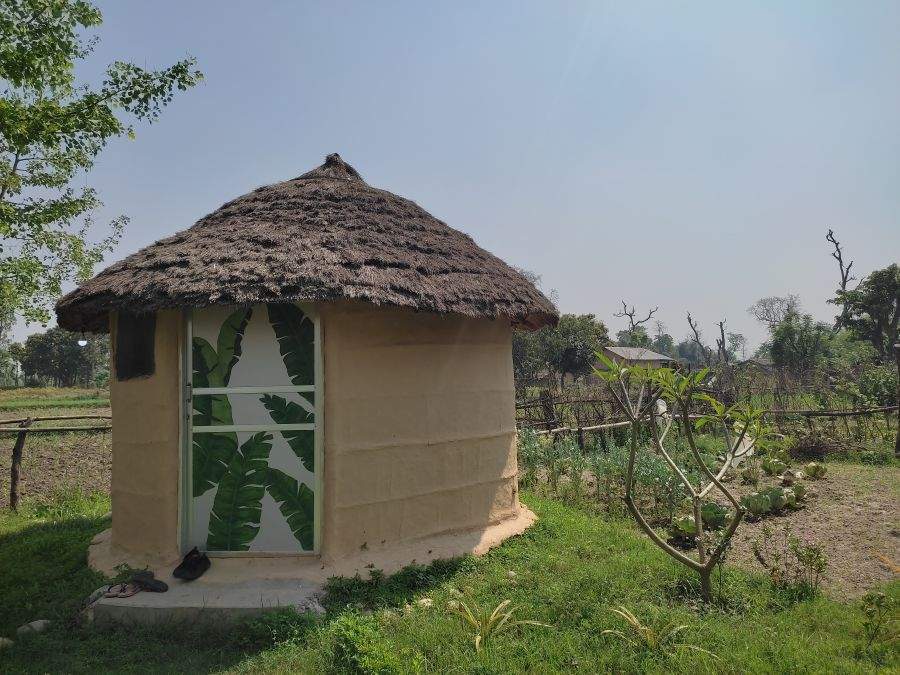

What do I need for a safari?
- sun cream
- something thin to put on for the morning
- Camera with telephoto lens if available
- Clothing without warning colours like orange, red, yellow.
- At best long trousers with detachable trouser legs
Arrival at Bardia National Park
The bottom line is that there are 2 ways to get to Bardia: Bus and plane.
For the sake of the environment, we decided to take the bus, even though it was extremely long. There are 2-3 buses a day that go directly from Pokhara to Ambasa. Alternatively, you can take a bus to Kohalpur or Nepalganj and change there. The bus ride takes what feels like an eternity and is anything but relaxing. We left around 13:30 and arrived in Ambasa around 7:00 the next morning. From there we took a tuk tuk for just under 600 NPR to get to our accommodation. Unfortunately, we were unlucky with our tuk tuk and it totally started smoking halfway – and that after 16 hours of travelling by bus overnight.
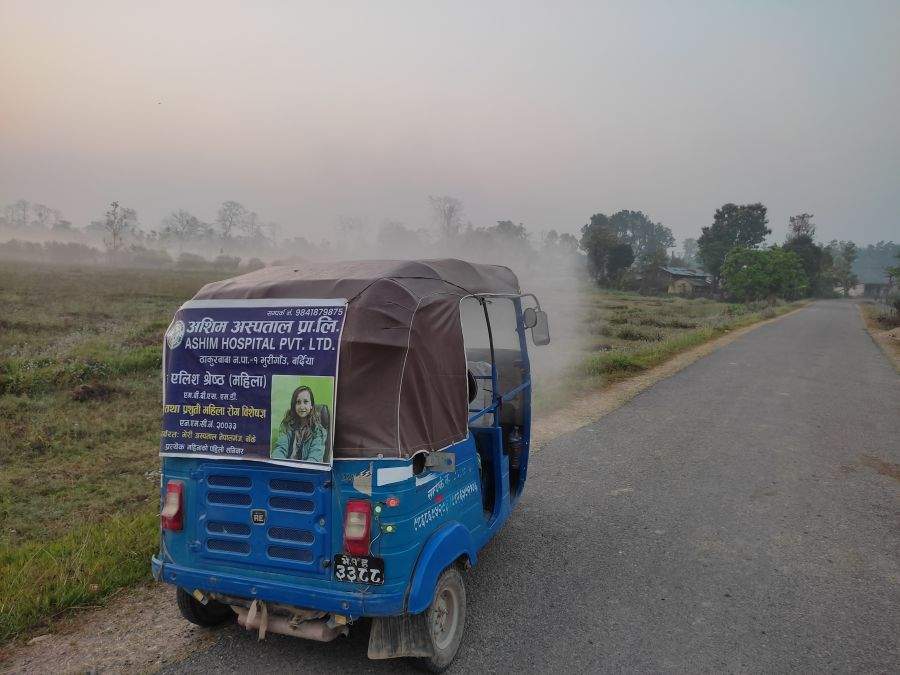

What else can you experience in Bardia?
Tharu villages
We went on a small bicycle tour with Pramesh, who showed us the surrounding Tharu villages with their very original lifestyle (free of charge). It was very exciting to see how people made furniture out of rattan. The Thaur live in mud huts and usually have livestock such as goats, buffalo and pigs. There are no asphalted roads here. Most people are on foot.

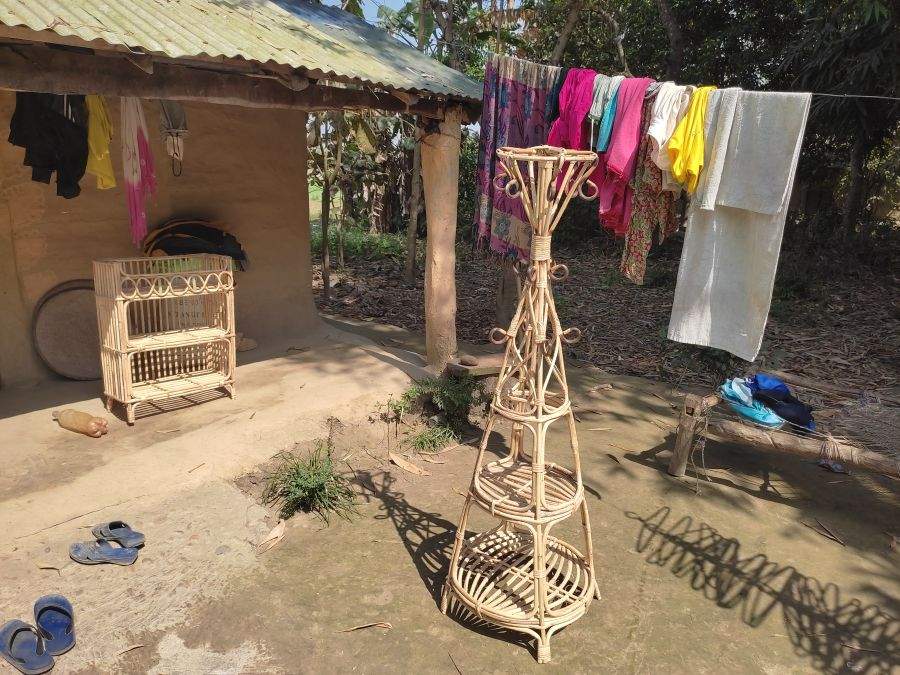
Ratan furniture 
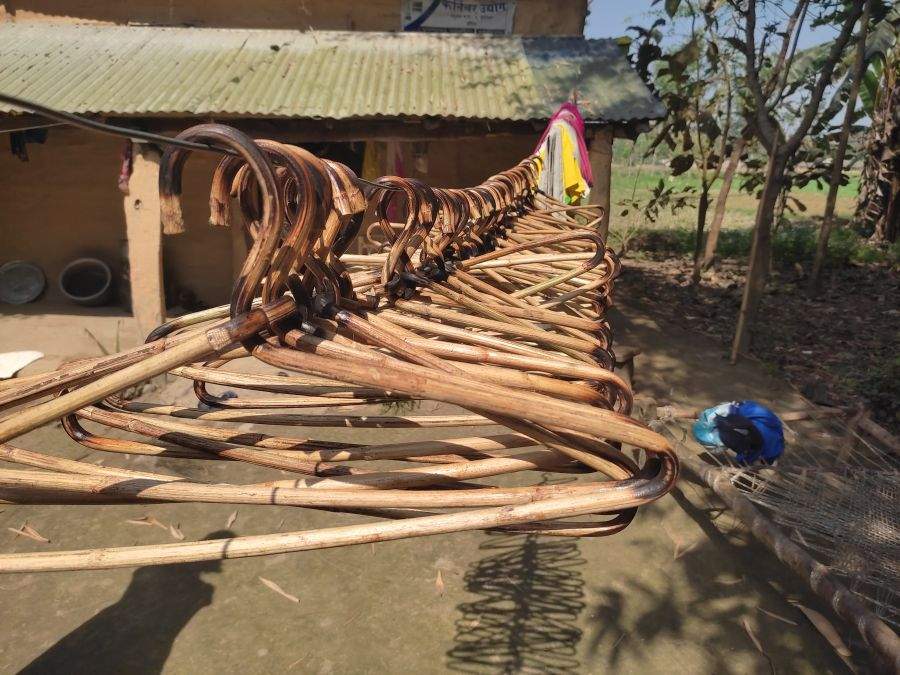
Ratan coat hanger
Swimming and sunset at the Girwa River
As it is very hot in Bardia, there is nothing like cooling off at the Girwa River. This is a 5-minute walk from the accommodation and offers a sandy beach. The locals also bathe here, as do some water buffaloes. Especially at sunset, with a bit of luck you can observe wild animals on the other side of the river. For example, we saw a wild elephant and an albino deer.





